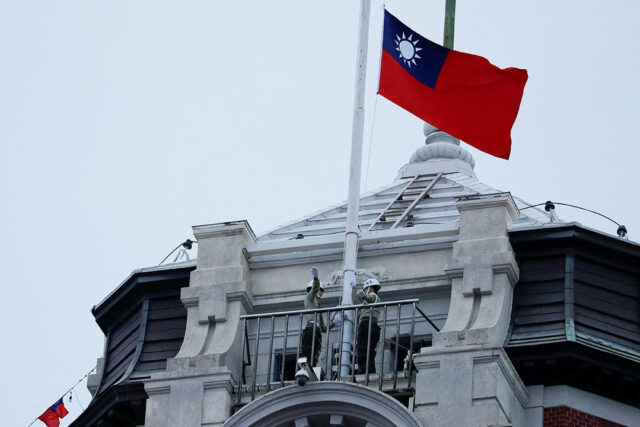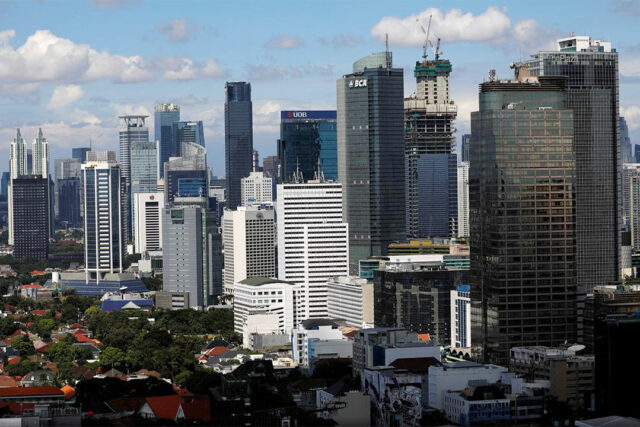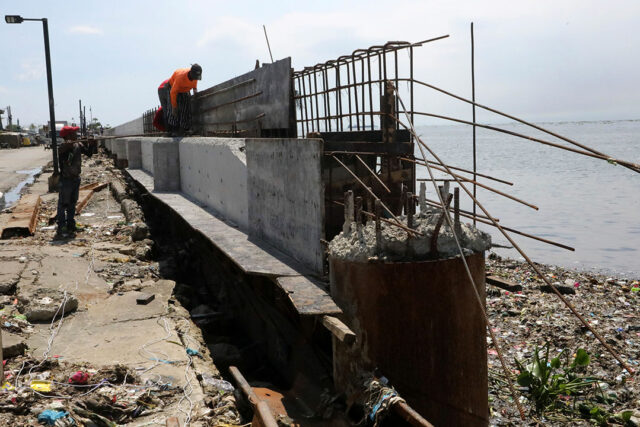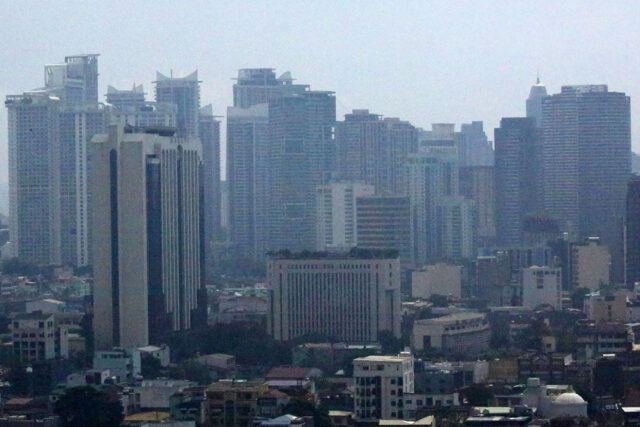THE QCINEMA International Film Festival will return to movie theaters for a 12th year, with new sections and programs expanding its reach.
With the theme “The Gaze,” the festival organizers invite audiences to explore diverse perspectives and new ways of seeing the world through film. The festival will run from Nov. 8 to 17 and will feature 77 films across 11 sections.
QCinema, founded in 2013, kicked off its first-ever Directors’ Factory Philippines this year, in collaboration with Cannes Directors’ Fortnight. The initiative allowed four filmmakers from the Philippines and four from other Asian nations to partner up and create films, which will be premiered at the festival.
These four films make up the opening night program on Nov. 8: Walay Balay by Eve Baswel (Philippines) and Gogularaajan Rajendran (Malaysia); Nightbirds by Maria Estela Paiso (Philippines) and Ashok Vish (India); Silig by Arvin Belarmino (Philippines) and Lomorpich Rithy (Cambodia); and Cold Cut by Don Eblahan (Philippines) and Tan Siyou (Singapore).
“QCinema can be the initial wedge to help us break the glass ceiling of world cinema and create the path to global recognition and respect,” Quezon City mayor Joy Belmonte said at a press conference on Oct. 22.
“This vision of QCinema is now a work in progress and is one major factor why Quezon City hopes to be designated as a UNESCO (United Nations Educational, Scientific and Cultural Organization) Creative City for Film. When that happens, our city will be the first in Asia to be given such a distinct honor,” Ms. Belmonte added.
The closing film on Nov. 17 is Japan’s entry to the 2024 Academy Awards, Cloud by Kiyoshi Kurosawa, which previously premiered at the Venice International Film Festival.
ASIAN NEXT WAVE
QCinema’s main competition section, Asian Next Wave, will be showcasing seven directorial debuts from Asian filmmakers.
Making the lineup this year are three female directors: Don’t Cry Butterfly by Vietnamese filmmaker Duong Dieu Linh, the Grand Prize winner at Venice Critics’ Week; Pierce by Singaporean filmmaker Nelicia Low, who was Best Director at the recent Karlovy Vary Crystal Globe Competition; and Mistress Dispeller, a documentary by Hong Kong filmmaker Elizabeth Lo, winner of the NETPAC award for Best Asian Film at Venice.
Other debuts in competition are Happyend by US-based Japanese director Neo Sora, which also recently premiered in Venice; Tale of the Land by Indonesian director Loeloe Hendra Komara, winner of the Fipresci prize in last month’s Busan; and Viet and Nam by Vietnamese director Truong Minh Quy, from Cannes’ Un Certain Regard.
The Filipino filmmaker competing in this section is Bor Ocampo, with Moneyslapper, which is making its world premiere at the festival.
SHORT FILMS
Another competition section is the shorts program. Last year, it was divided into QCShorts for local films given production grants, and QCSEA, for local and Southeast Asian films which had already premiered elsewhere.
This year, QCShorts International combines the two. It includes films from across Southeast Asia, with six Filipino short film grantees competing alongside the region’s best.
The local films are Alaga by Nicole Rosacay, Kinakausap ni Celso ang Diyos by Gilb Baldoza, Refrain by Joseph Dominic Cruz, RAMPAGE! (o ang parada) by Kukay Bautista Zinampan, Supermassive Heavenly Body by Sam Villa-Real, and Water Sports by Whammy Alcazaren.
From Southeast Asia are: Are We Still Friends? by Al Ridwan (Indonesia); Here We Are by Chanasorn Chaikitiporn (Thailand); In the Name of Love I Will Punish You by Exsell Rabbani (Indonesia); Peaceland by Ekin Kee Charles (Malaysia); Saigon Kiss by Hồng Anh Nguyễn (Vietnam); and WAShhh by Mickey Lai (Malaysia).
NEW COMPETITION SECTIONS
QCinema festival director Ed Lejano said that the two expanded competition sections will be joined by RainbowQC and New Horizons, which were previously just exhibition sections, to “flex in our region of Southeast Asia.”
“We have separate programmers for shorts now. We’re really fully loaded, doing what other big film festivals like Busan are doing, but in our own way, here in Quezon City,” Mr. Lejano told BusinessWorld.
RainbowQC celebrates LGBTQIA+ (lesbian, gay, bisexual, trans, queer, intersex, asexual, plus) films, showcasing diverse stories of identity, love, and community with bold and authentic voices from queer cinema worldwide.
Its films include three Cannes Queer Palm nominees: Baby by Marcelo Caetano, The Balconettes by Noémie Merlant, and My Sunshine, by Hiroshi Okuyama. Two other titles round up this competition: Pooja, Sir by Deepak Rauniyar, and Sebastian by Mikko Mäkelä.
New Horizons presents groundbreaking debut features from new directors: Blue Sun Palace by Constance Tsang, winner of the French Touch Prize at Cannes Critics’ Week; Cu Li Never Cries by Phạm Ngọc Lân, which won Best First Feature in Berlin; Santosh by Sandhya Suri from Cannes’ Un Certain Regard; The Major Tones by Ingrid Pokropek, selected at the Berlin Film Festival; and Toxic by Saulė Bliuvaitė, which won a Locarno Golden Leopard.
“We’re really spreading our wings to embrace all filmmakers, be it documentaries or shorts,” added Mr. Lejano.
EXHIBITION SECTIONS
Cinephiles also look forward to QCinema’s non-competition sections which give them a chance to catch titles that rarely see a theatrical release in the country.
One of these sections is Screen International, which will showcase the films of 10 world-renowned directors. Two of these are recent titles from the San Sebastian Film Festival: Spanish documentary Afternoons of Solitude by Albert Serra which won Best Film, and French film When Fall is Coming by François Ozon which won the Best Screenplay award.
The section will also have Cannes winners: India’s All We Imagine as Light by Payal Kapadia (Grand Prix); Portugal’s Grand Tour by Miguel Gomes (Best Director); Argentina’s Simon of the Mountain by Federico Luis (Critics Week Grand Prize); and the US’ Anora by Sean Baker (Palm d’Or).
Completing the lineup are Lav Diaz’ Phantosmia which premiered in Venice, The End by Joshua Oppenheimer, The Count of Monte Cristo by Alexandre de la Patellièr and Matthieu Delaporte, and Venice Golden Lion-winning The Room Next Door by Pedro Almodóvar.
The festival’s brand new QCLokal section will highlight Filipino talents.
To be shown in the section are Room in a Crowd by John Torres, featuring a special live sound performance and stitched-together footage from the lockdown; and Makamisa: Phantasm of Revenge by Khavn, which won Best Feature at Lausanne, and was inspired by José Rizal’s unfinished third novel.
The festival will also have the Shorts Expo, which presents five world premieres of remarkable short films such as Brownout Capital by Pabelle Manikan, Forgetting Clara by Nicole Matti, May Puso ba ang Manika? by Shiri de Leon, Objects Do Not Randomly Fall from the Sky by Maria Estela Paiso, Yung Huling Swimming Reunion Before Life Happens by Glenn Barit, and the Southeast Asian premiere of Invisible Labor by Joanne Cesario.
SPECIAL SCREENINGS AND MORE
Films to be shown in the Special Screenings section are Dominic Baekart’s An Errand, Kaung Zan’s If My Lover Were a Flower, Hanz Florentino’s A Thousand Forests, and Bryan Brazil’s controversial documentary Lost Sabungeros.
On the last film, Mr. Lejano told the press that “there is a context for everything that the festival espouses.”
“Whether it’s a provocative LGBTQIA+ film or an investigative journalism-type documentary, QCinema will always be a safe space for it,” he said. “We get to do what we want because we don’t have any censorship. We classify our own films. I think that’s the way it should be for all festivals in the Philippines.”
Another must-watch section that welcomes films with fantastical, action-packed, or erotic themes is Before Midnight. To be shown in the section are: Motel Destino by Karim Aïnouz, Gazer by Ryan J. Sloan, Infinite Summer by Miguel Llansó, A Samurai in Time by Junichi Yasuda, and The Wailing by Pedro Martin-Calero.
The Rediscovery section, previously named the Restored Classics section, is expected to draw crowds. To be screened this year are Delicatessen by Jean-Pierre Jeunet and Marc Caro; Cannes-winning and Oscar-nominated Dogtooth by Yorgos Lanthimos, and Akira Kurosawa’s final epic, Ran.
This year will also have a section dedicated to contemporary Italian cinema, showing Diabolik by Antonio and Marco Manetti, Io Capitano by Matteo Garrone, Kidnapped: The Abduction of Edgardo Mortara by Marco Bellocchio, My Summer with Irene by Carlo Sironi, La Chimera by Alice Rohrwacher, and Palazzina Laf by Michele Riondino.
Finally, QCinema Selects will present a special selection of standout films from around the world. Its lineup includes: Ghost Cat Anzu by Yoko Kuno and Nobuhiro Yamashita; No Other Land by Rachel Szor, Yuval Abraham, Hamdan Ballal, and Basel Adra; Shahid by Narges Kalhor; Sujo by Fernanda Valadez and Astrid Rondero; The Sparrow in the Chimney by Ramon Zürcher; and Twilight of the Warriors: Walled In by Soi Cheang.
Screenings will be held at the cinemas of the Gateway Mall, Trinoma, Shangri-la Plaza, and the Power Plant Mall. Regular tickets cost P300. For more information about QCinema, visit the website at qcinema.ph or follow its social media accounts — www.facebook.com/QCinemaPH, twitter.com/QCinemaPH, and www.instagram.com/qcinemaph. — Brontë H. Lacsamana


















